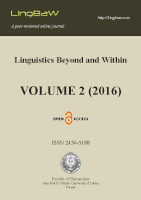Second Order Coherence: A new way of looking at incoherence in texts
Second Order Coherence: A new way of looking at incoherence in texts
Author(s): Ib UlbaekSubject(s): Pragmatics, Sociolinguistics, Cognitive linguistics
Published by: Wydawnictwo KUL
Keywords: text linguistics; coherence; text analysis; pragmatics;
Summary/Abstract: By using van Dijk’s concept of coherence and bringing it together with my Principle of meaning iconicity, we have a new way of looking at incoherence in texts. The principle says that closely related information is meaningfully related on a pragmatic level, an instruction to the reader to relate the information to each other. It is demonstrated by textual analysis that the concept of coherence can be used analytically by dividing it into first and second order coherence. First order coherence is the usual concept of coherence: sentences are connected by cohesive links and related by causality, time etc. Second order coherence is a way of organizing text by using incoherence as a way of organizing text into chunks of coherent parts. It is shown how readers can detect these structures in the text by detecting the incoherence even without the layout of the text to signal structure (e.g. indention of paragraphs).
Journal: Linguistics Beyond and Within (LingBaW)
- Issue Year: 2/2016
- Issue No: 2
- Page Range: 167-179
- Page Count: 13
- Language: English

